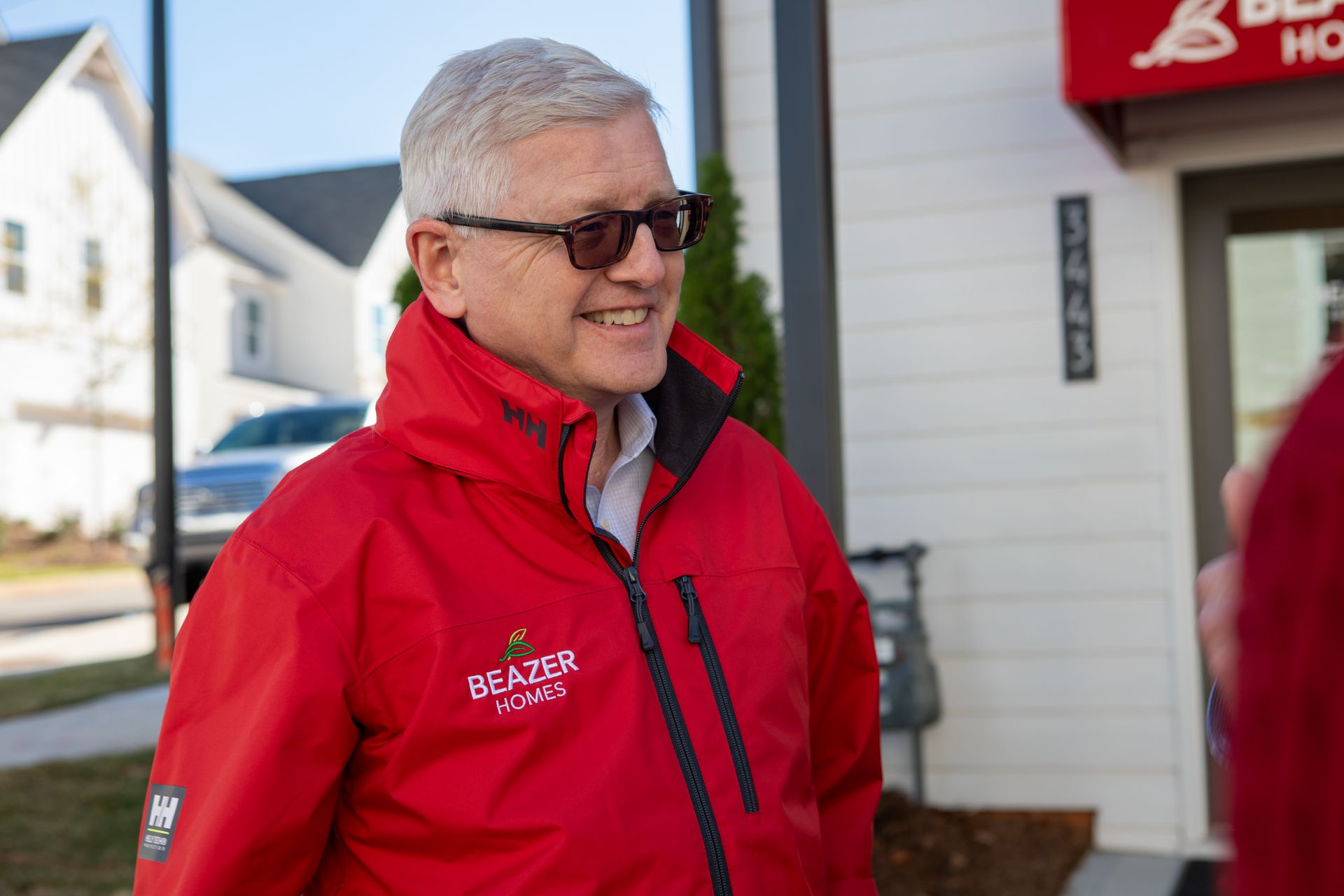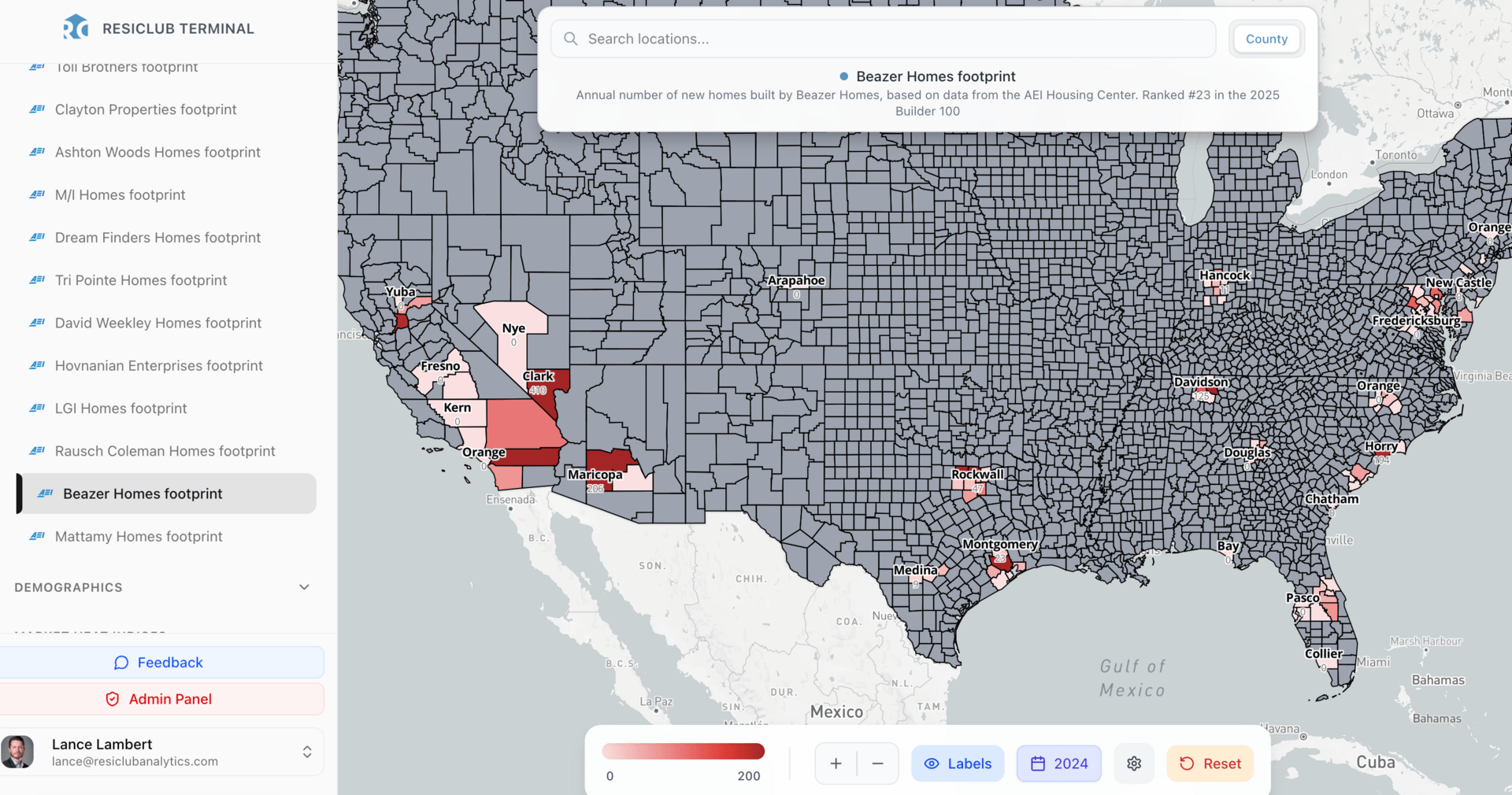- ResiClub
- Posts
- Homebuilders keep shrinking homes—Beazer’s CEO says that’s the wrong answer
Homebuilders keep shrinking homes—Beazer’s CEO says that’s the wrong answer
Beazer Homes CEO Allan Merrill: "We want to change the affordability equation... It’s not just about what you can afford today at closing—it’s about what it costs to own the home every month."
Today’s letter is brought to you by Stessa, the investing platform built for rental property owners.
Finding great deals shouldn’t require institutional resources. With Stessa, you get professional-grade analytics, nationwide rental data, and intelligent deal alerts the moment cap rates move—all built for independent investors.
Stessa gives you everything you need to confidently evaluate and pursue your next acquisition, including:
Real-time cap rate & yield data across 1M+ listings
Underwriting tools to instantly model performance & returns
Alerts on markets and properties that match your exact buy box
Whether you’re scaling from one door to ten or ten to fifty, Stessa helps you find, analyze, and act on the best opportunities faster than the average investor.
Beazer CEO: ‘I don’t want to sell you a cheaper home. I want to sell you one that costs less to live in’
Since mortgage rates spiked in 2022, many large homebuilders have tried to make homes more affordable by shrinking them, stripping them down, or pushing buyers farther out. Allan Merrill, CEO of Atlanta-based Beazer Homes—a publicly traded builder with a $710 million market capitalization and the 23rd-largest single-family homebuilder last year—believes that’s the wrong approach.
“The way I think about it is, I don’t want to sell you a cheaper home,” Merrill told ResiClub last week. “I want to sell you a home that costs you less every month to live in—and one that will still hold its value five or ten years from now.”
Beazer’s plan focuses on three key areas: lowering the cost to power, insure, and finance a home.
“If you can take $150 or $200 a month out of your operating cost [monthly payment], that’s real affordability,” Merrill said. “We’re not trying to sell you less house—we’re trying to sell you a better, more efficient one.”

Beazer Homes CEO Allan Merrill is among the speakers at ResiDay 2025 on Friday, Nov. 7th.
Affordability lever 1: Cutting energy bills through design, not gimmicks
The centerpiece of Beazer’s affordability push is its energy efficiency standard. Every Beazer home is built to the Energy Rated Value—a benchmark that exceeds building codes and emphasizes insulation, air filtration, and low humidity levels.
“We pride ourselves on building beyond [local] energy codes so you are buying a home from the future today,” Merrill says. “You don’t want to buy a home that’s functionally obsolete the day you close.” Beazer sees this as more than a sustainability move—it’s a financial one. Lower energy bills directly reduce a homeowner’s monthly cost of living, which Merrill calls “material savings.”
“It’s $100 a month, $200 a month on the margin,” he says. “The present value of that is in the thousands of dollars, but over the life of the loan could be over $30,000 [in savings].”
Beazer says its homes are designed to feel tangibly different: quieter, better insulated, and healthier. “It feels different in here,” Merrill says. “It sounds different. It smells different. A home with double-filtered fresh air and low humidity literally feels different.”
Merrill says this is all underscored in Beazers new campaign, Enjoy the Great Indoors.
Affordability lever 2: Lowering insurance costs through an in-house agency
The second affordability lever comes not from the home itself, but from the insurance that protects it. Beazer has its own insurance agency—and it gives away the profits.
Beazer wanted to have an agency to organize the proposals from the different firms, Merrill explains, adding: “But that entity distributes its profits to our charitable foundation—and that’s actually what we do with title insurance as well.”
The Beazer insurance agency operates in-house, handling the paperwork and logistics of homeowners’ and title insurance while keeping buyers’ costs competitive. Because it isn’t structured to make money for Beazer, it can pass along more savings to the buyer. It’s a small but symbolic move in a business where hidden transaction fees are common.
“We don’t need to make money on every piece of the home purchase,” he says. “We’re trying to make homeownership more attainable.”
Affordability lever 3: Reducing mortgage costs with an in-house competition platform
The third pillar of Beazer’s affordability strategy is the company’s in-house mortgage platform, which hosts a marketplace of competing lenders. “In mortgage, there are literally no economics to us,” Merrill says. “We are not lenders, we are not brokers, we are in no way in the mortgage business. We have a platform where the banks can compete effectively, directly for the buyers.”
Unlike some other builders, Beazer doesn’t have a captive finance arm that earns interest or fees, he says. Instead, the company uses its internal program to connect buyers directly to multiple banks—and takes no profit from the transaction. That competition, Merrill says, often drives rates below what buyers would find on their own.
“Today, you’ll see permanent buydowns in the 4.99% range [in many markets], down from the low sixes,” he explains. “Every 25 basis points costs about a point—but we’re not adding a margin on top of that.” By building both the insurance and mortgage processes in-house—but running them as service models, not profit centers—Beazer is says it’s able to lower monthly payments for its homebuyers.
Building forward, not backward
What some other builders—those going smaller or cutting back on quality—are doing, Merrill argues, would be like Apple bringing back the iPhone 13 or 14 instead of rolling out the iPhone 18. “I don’t think that’s a great long-term strategy,” he says.
Merrill said the company’s approach differs from many of its publicly traded peers, which have leaned on aggressive incentives or cheaper design packages to maintain volume in a high-rate environment. “In an attempt to reduce cost, what we see a lot in the industry is we’re effectively going backward.”
Beazer, instead, is investing to make each home iteration better than the last—even as affordability pressures mount. “We have continued to innovate,” Merrill said. “I want to deliver the version [iPhone] 19 and version 20, and have their feature be your low cost of operation. Instead of saying, ‘Good news, you can buy something that was available five years ago.’”
Beazer Homes: Policymakers could help out if they lowered building fees
In Merrill’s view, the housing affordability strain isn’t just about interest rates—it’s about decades of underinvestment in infrastructure and an overreliance on permit and impact fees that push costs onto new homebuyers.
“In Northern California, it’s $140,000 [spent by us] before we even break ground—just in [government] fees,” Merrill said. “Across the country, it’s $60,000 or $70,000. That number used to be under $10,000 [per home].”
He compares having new builds shoulder a disproportionate share of government revenue through impact and permit fees to the way the U.S. runs budget deficits: “We’ve been living on credit, but instead of running up a big deficit, we’ve just shifted it to the next generation of homebuyers,” he said. “Then we complain about why they can’t buy homes.”
Beazer Homes CEO Allan Merrill is among the speakers at ResiDay 2025. ResiClub is hosting the one-day conference on Friday, November 7, in New York City.
Back on July 31, 2025, Beazer Homes reported its fiscal third quarter. Below, ResiClub pulled its prior fiscal third quarters for net orders, backlog, and gross margin 👇


In the ResiClub Terminal, ResiClub PRO members can view data on publicly traded homebuilders’ footprints—see Beazer Homes’ footprint below 👇


